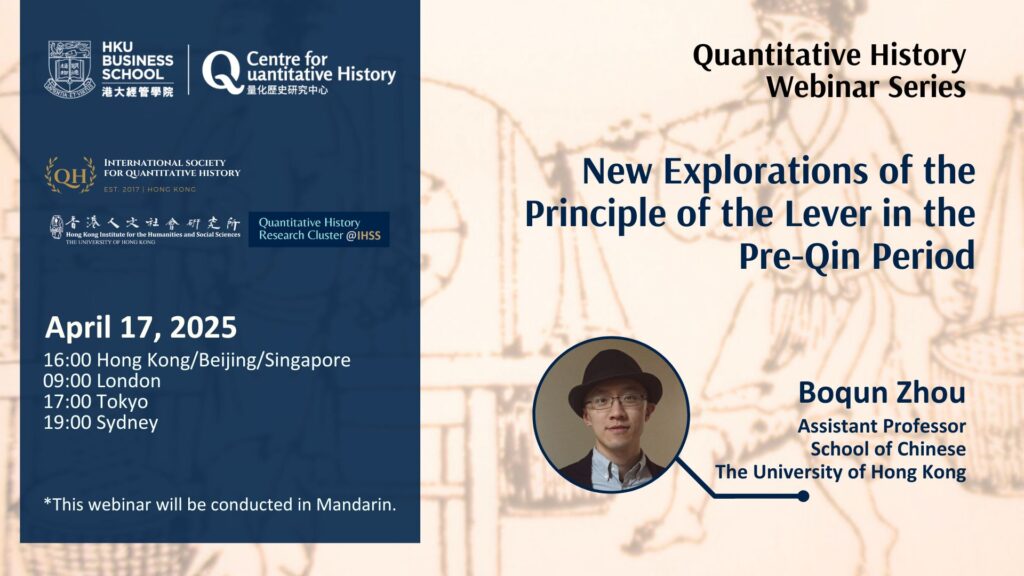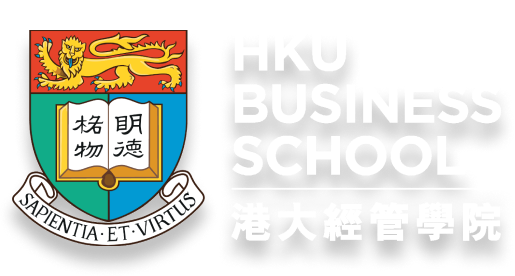This event is coming soon
Register Date(s)
Date(s)April 17, 2025
 Time
Time16:00 - 17:30
Zoom Webinar
 Language(s)
Language(s)Mandarin
Speaker(s) / Presenter(s)

Assistant Professor
School of Chinese
The University of Hong Kong
Description
The lever is one of the most fundamental simple machines in ancient civilizations. Archaeological discoveries and historical records indicate that as early as the Pre-Qin period, levers were widely employed, particularly in balance instruments and lifting devices. However, references to the principle of the lever in ancient texts are scarce. The only known discussions appear in a few brief and obscure passages in the Mohist Canon, which do not incorporate mathematical analysis. Additionally, the National Museum of China houses two Warring States balance beams from the Chu area. These beams bear evenly spaced markings that were evidently used for weighing calculations, yet their precise function and significance remain unclear. In this Quantitative History Webinar, Boqun Zhou will offer new insights into the mechanics of levers in the Mohist Canon and the scale markings on Chu balance beams. While Mohist discussions on levers lack quantitative analysis, they adopt an approach similar to the modern scientific method of controlled experiments to examine lever functionality. Meanwhile, the scale markings on Chu balance beams reflect an understanding of the mathematical principle that torque is inversely proportional to weight. However, their use appears to have been confined to dividing unit weights, with calculable values restricted to a small set of integer ratios. By considering these two aspects together, we can gain a more precise understanding of how lever mechanics were conceptualized in the Pre-Qin period.
先秦時期槓桿原理的新探索
槓桿是古代文明中最重要的簡單機械之一。考古發現與文獻記載表明,早在先秦時期,槓桿已得到廣泛應用,特別是在權衡器與起重裝置中。然而,古籍對槓桿原理的記載極為有限,目前僅見於《墨經》中的幾條簡短而晦澀的經說,且未涉及數學分析。此外,中國國家博物館收藏的兩件戰國時期楚國天平衡桿上刻有等距刻度,顯然與稱重計算有關,但其具體意義與功能長期未獲充分解釋。本講座將對《墨經》的槓桿力學與楚國天平刻度提出新的見解。一方面,墨家雖未對槓桿進行定量分析,卻採用類似現代科學實驗中的控制變量法來探討其功能。另一方面,楚國衡桿的刻度體現了力矩與重物成反比的數學原理,但其應用僅限於單位重量的分割,且可計算的數值範圍受限於少數整數比。綜合考察這兩者,有助於我們更準確地理解先秦時期對槓桿力學的認識。
Discussant: Chun Fung Tong, Assistant Professor, School of Chinese/Hong Kong Institute for the Humanities and Social Sciences, The University of Hong Kong
*This webinar will be conducted in Mandarin.
Event Poster

About the Quantitative History Webinar Series
The Quantitative History (QH) Webinar Series aims to provide researchers, teachers, and students with an online intellectual platform to keep up to date with the latest research in the field, promoting the dissemination of research findings and interdisciplinary use of quantitative methods in historical research. The QH Webinar Series, now entering its fifth year, is co-organized by the Centre for Quantitative History at the HKU Business School and the International Society for Quantitative History in partnership with the Hong Kong Institute for the Humanities and Social Sciences. The Series is now substantially supported by the Areas of Excellence (AoE) Scheme from the Research Grants Council of the Hong Kong Special Administrative Region, China (Project No. [AoE/B-704/22-R]).
量化歷史網上講座系列由香港大學陳志武和馬馳騁教授聯合發起,旨在介紹前沿量化歷史研究成果、促進同仁交流,推廣量化方法在歷史研究中的應用。本系列講座由香港大學經管學院量化歷史研究中心和國際量化歷史學會承辦,及香港人文社會研究所全力支持。從2023年開始,系列得到中國香港特別行政區研究資助局卓越學科領域計劃的重要資助 (項目編號[AoE/B-704/22-R])。
Conveners: Professors Zhiwu Chen & Chicheng Ma (HKU Business School)



